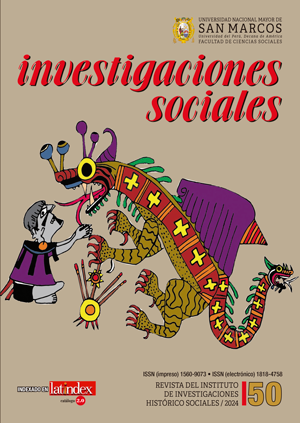Heartbreaked in pain: post-mortem photography of subadults during the first decades of the 20th century in Peru
DOI:
https://doi.org/10.15381/is.n50.25684Keywords:
Postmortem photography, memento mori, funeral photograhpy, memoryAbstract
Since its invention, photography has allowed us to build a visual memory of the vital events of our existence and among them the death of a loved one as one of the most dramatic memories that allows us to remember the family member and in turn reminds us of our own inevitable destination. During the 19th and 20th centuries, a practice known as postmortem photography was developed, which was brought from Europe to America, where it developed with its own nuances. In its beginnings, photography was reserved for the most privileged social classes, while the less affluent social classes allocated their resources to preserve the first and only image of the deceased person, which is why this practice had enormous social and psychological importance. This article shows four postmortem portraits of subadult individuals whose data is found in the first two decades of the 20th century in Peru.
Downloads
Published
Issue
Section
License
Copyright (c) 2025 Flavio Antonio Estrada Moreno, Martín Barraza Mendoza

This work is licensed under a Creative Commons Attribution 4.0 International License.
AUTHORS RETAIN THEIR RIGHTS:
a. Authors retain their trade mark rights and patent, and also on any process or procedure described in the article.
b. Authors retain their right to share, copy, distribute, perform and publicly communicate their article (eg, to place their article in an institutional repository or publish it in a book), with an acknowledgment of its initial publication in Investigaciones Sociales.
c. Authors retain theirs right to make a subsequent publication of their work, to use the article or any part thereof (eg a compilation of his papers, lecture notes, thesis, or a book), always indicating the source of publication (the originator of the work, journal, volume, number and date).






